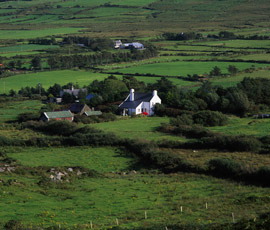Professional eyes on smallholdings market

Kathryn Lewis, 24, made the headlines recently with a successful tender for a county council tenancy on a smallholding in Wales. Many other smallholdings are finding keen buyers with less commercial ambitions.
Ms Lewis’ business planning skills won her the tenancy – not only is she a keen young farmer, but she is also a land agent working in the Oswestry office of Davis Meade Property consultants. She will need all her skills to make a living from the sheep and beef she plans to run on the 54-acre Powys County Council farm near Montgomery.
It is hard to make a viable living from a smallholding of less than 50 acres and resilient demand from non-agricultural buyers seeking privacy, country air and a bit of land has long given these properties an alternative market.
Despite a still-faltering residential market in many areas, there is strong demand for smallholdings with anything up to 50 acres, according to Bedale-based Robin Jessop in North Yorkshire – “providing they are realistically priced”.
The firm has this summer agreed sales for 12-acre, 19-acre and 20-acre holdings around Thirsk (especially between Thirsk and Northallerton) and 40 acres in the Walden region of Wensleydale. Buyers are diverse – the prospective owner of the Wensleydale holding is an Antarctic scientist.
There is good demand – probably better than a year ago, says Robin Jessop – from business people, those who are retiring early, and from successful professionals. Consultants from the James Cook University Hospital, a major tertiary referral hospital in Middlesbrough, are a significant source of enquiries, for example. Most buyers are looking to spend between £500,000 and £1m.
Land values are also pushing up the value of smallholdings, says Chris Jones at Berrys, a firm now operating in an area stretching from Manchester to Berkshire. Shortage of supply in Shropshire, and especially the sought-after villages around Shrewsbury, for example, is exacerbated by arable land prices routinely over £10,000/acre. A large block of land has recently made more than £11,000/acre.
Changes for permitted development, dating from 30 May this year, could help fuel the demand for smallholdings, many of which are offered with modest dwellings. They will allow for single-storey rear extensions of up to 8m for a detached dwelling and 6m in the case of other dwellings, with a maximum height of 4m.
Although this does not apply to property within national parks, AONBs, conservation areas or SSSIs, and still requires application to the local authority, it means that unless a neighbour objects, consent will be given more readily to those who want to extend a house.
Debt behind increasing number of farm sales
